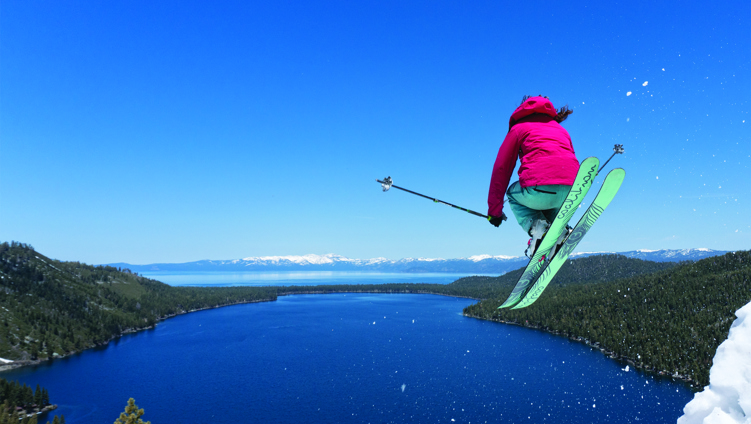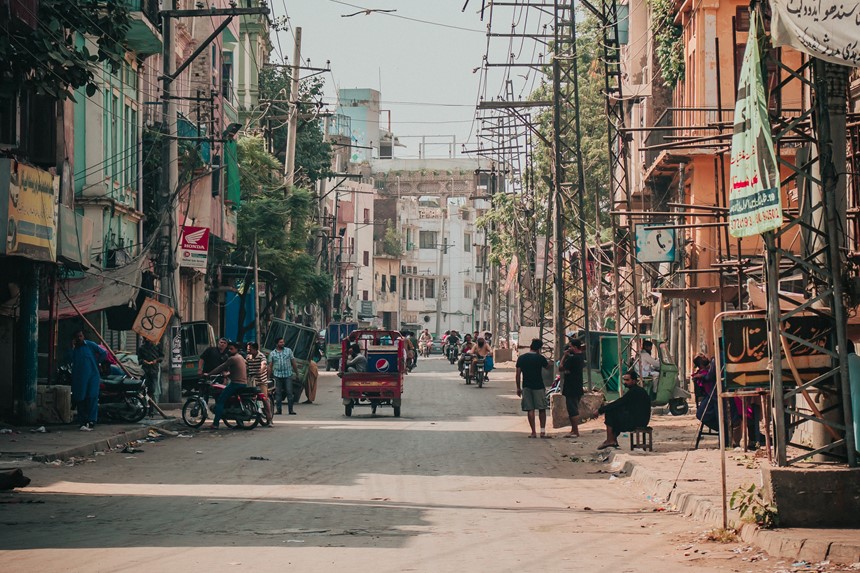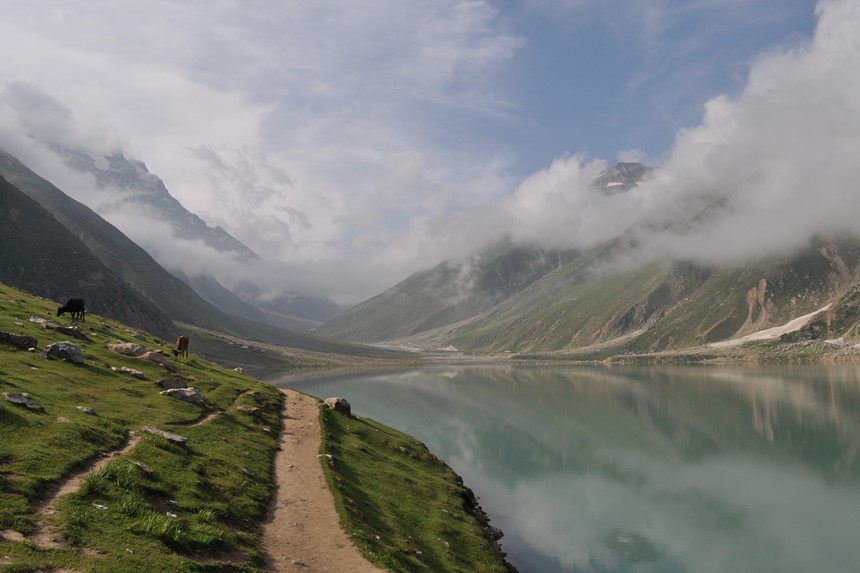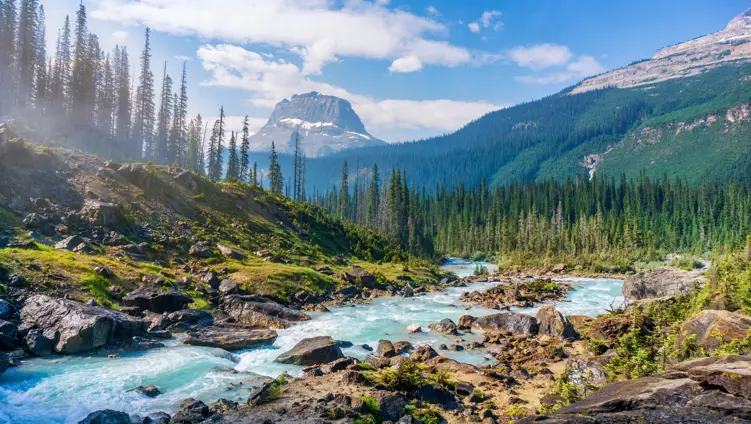Inspired by slow adventure and slow journalism, diaspora journalist Anam Hussain is rewriting violent stereotypes of Pakistan.

Inspired by slow adventure and slow journalism, diaspora journalist Anam Hussain is rewriting violent stereotypes of Pakistan.
Security threats, violence and terror–all imply extreme danger. We've heard these words repeatedly associated with Pakistan, making us cautious of travelling to the country, but they only paint a stereotypical image.
Not many know that this same country was one of the essential stops of the Hippie Trail, a famous overland route that started in Europe and travelled through Asia, across Pakistan’s Khyber Pass, Peshawar and Lahore, between the mid 1950s and late 1970s.
Not many know that Pakistan is a place where many climbers and skiers are still welcomed; where the spatial arrangement of the national tree, deodar cedar, exquisitely outlines the Himalayan mountains; where, in the city of Karachi, scuba divers are opening up miles of pristine coastline; and where, with every twist and turn, the northern views get ever more glorious.
A street in Lahore - Adeel Shabir, Unsplash

Every summer, I join my extended family in Pakistan for a road trip to the North-West Frontier Province. Our group of 30 leaves the bustling city of Lahore in a convoy of vehicles towards the north. This time, we're heading for Naran Khagan – listed as one of Suitcase Magazine’s 'Outrageous Escapism' spots.
In doing so, I'm visiting a country in which the England and New Zealand cricket teams both recently called off their tours, citing security concerns. Did this mean I should also abandon travelling to such a place?
Any doubts become dominated by the enchanting views of the Kaghan Valley as we gradually ascend in sharp bends. The mountains become more elevated, exhibiting at every turn, while the presence of forests and high meadows on all sides serve as a constant reminder of Pakistan's raw beauty.
Naturally pausing to admire the distinct landscape, we pass through the Balakot riverside and stop at Abshar Cafe –a small restaurant at the base of the Kiwai Waterfall. We sit at tables placed in the shallow running waters, enjoying food and snacks while dipping our feet into the cold stream.
Abshar Cafe - Anam Hussain

'I'm visiting a country in which the England and New Zealand cricket teams both recently called off their tours, citing security concerns. Did this mean I should also abandon travelling to such a place?'
After entering Naran, we spend an hour on a narrow, brain-rattling jeep track and then, rounding a corner, a panoramic, elevated view rips our hearts open. We have finally reached our destination: Lake Saif-Ul-Malook, located in the Kaghan Valley, at an altitude of 3,224 meters above sea level – the highest alpine lake of Pakistan - creating a reflective symmetry of snow-capped mountains. I'm mesmerised by the shape and colours of the icy, watery world.
"This is postcard Pakistan. All that you hear in the news is an exaggeration," Saifullah tells me as I climb atop his horse, to ride for an hour around a single track circling the majestic lake. He walks alongside the gentle clip-clop, handling the cavalry-knotted lead rope.
Saif-Ul-Malook Lake - Isaac Kenneth Wajid, Unsplash

It's true. Most Western media’s news coverage of Pakistan follows the same persistent and negative narratives. For instance, an op-ed published in the Los Angeles Times on July 13, 2021, discussing the rise of homicide rates in the U.S., observes that the U.S. “is ranked in the global murder rate index worse than Pakistan." Yes, the U.S. is considerably more dangerous in terms of homicides than Pakistan. It reports 5.30 intentional homicides per 100,000 people, whereas Pakistan reports 4.20. Other countries are far more dangerous. El Salvador reports 61.80 murders per 100,000, and Belize, a popular destination for beachgoers, reports 37.90.
Analysis by NewsFrames and Global Voices Pakistan demonstrates that U.S. media reporting of Pakistan mainly focuses on violence and terror. In comparison, the research illustrates that internal Pakistan media coverage largely discusses economics and politics.
By focusing disproportionately on conflicts and troubles, the media has set the agenda for Pakistan as a 'violent' country. According to the agenda-setting theory, the media has the power to filter and shape which topics are perceived as newsworthy, by selectively reporting on those of their choosing. This causes biased opinions. The theory is rooted in the 'priming' mechanism, which occurs when media content indicates to the public that they should treat specific topics as benchmarks, or as criteria, when judging the overall characteristics of a particular country, culture or government. Every country has its problems. But disproportionately reporting on violence in Pakistan makes us believe Pakistan is more dangerous than it is.
'By focusing disproportionately on conflicts and troubles, the media has set the agenda for Pakistan as a 'violent' country.'
This distorted view is very different to the Pakistan I experience, almost every year, as a British-Pakistani with strong roots in my ancestral homeland. I've seen gardens full of mango trees in the Sukh Chayn Park of Lahore, and the mausoleums of the great saints in the historic city of Multan. In the narrow gullies of Anarkali bazaar, I’ve indulged in the lip-smacking flavours of the popular street food Dahi Bhallay - fluffy fried lentil balls, dunked in yoghurt and dressed with tamarind sauce, with a glass of mango milkshake in the other hand.
"To fully understand Pakistan, you need to first ignore the media bias, and then take a slow-pace journey," says Saifullah.
It's wise advice. By immersing myself in its wild spaces and connecting with the environment at a slower pace — otherwise known as having a "slow adventure" — I’ve discovered Pakistan beyond the headlines.
Multan - Umar Khan, Unsplash

My horseback journey comes full circle, and Saifullah makes a stop at the tea stall. I sip the rich, milky chai over locally fried potato pakoras. Not far away, brightly coloured boats circle along the edge of the lake. A craftsman, who's been building boats, offers a ride.
I jump aboard, and immediately spot trout. The unhurried voyage encourages me to pause and reconnect with nature, a light breeze washing over my face. I take out my notepad and begin making notes, listening to the craftsman narrate a romantic folk tale about a fairy and prince. "There's nothing quite like getting out onto a silent, slow-flowing lake, surrounded by mountainscape on a sunny day," he says.
Naran Khagan - Kashif Afridi, Unsplash

For me, travelling slowly in Pakistan, as a diaspora travel journalist, is filled with a perspective-shifting joy that transforms the way I think about my own identity, roots and heritage. Whether I’m chugging through Pakistan's kaleidoscope of landscapes on an old British-era railway, making long conversation with native co-passengers, or walking narrow market streets in a pair of embroidered Peshawari sandals handmade by local artisans, there is something undeniably romantic about embracing the slower side of Pakistan. Moving slowly, I feel I’m blending in with the community, but feeling like myself at the same time. It allows me to be a part of the place and culture in a way that driving through a fast-paced itinerary, filled with back-to-back sights and guided tours, never can.
Travelling slowly is more of an attitude than a speed. It’s about accepting a slow perspective - spending more time seeing less. I recall spending long summer days walking mountain slopes in the Swat District, and playing Ludo on a private, riverside balcony nearby. There was uninterrupted, unlimited time to read, write, take notes and do nothing but listen to the calming river and the sound of the wind whispering through the pines. I felt no culture shock, because I was committed to not rushing, acclimatising slowly along the way.
One of Lahore's gateways - Anam Hussain

Adventurist and Pulitzer Prize-winning journalist Paul Salopek helps explain all this. Salopek has been walking around the world for the last eight years, moving at the rhythm of his footsteps as he retraces the great path of human migration. The concept behind his journey is ‘slow journalism’, an experiment in captivating storytelling.
Salopek describes slow journalism best: "The sheer volume of news being generated from professional journalists, citizen journalists, from tweets and blogs or what have you, is nearly self-defeating. It’s a tsunami of information. It’s almost unprocessable. We don’t need more information. We need more meaning. It takes great slowing down to see how the great global stories of our day, whether they be climate change, conflict, poverty, or mass migration, are interconnected. The world isn’t flat. It’s deeply corrugated. And some of the best stories lie hidden in the corrugations."
In the same way, the authenticity of Pakistan remains buried under the layers and cycles of fast and instantaneous journalism - in desperate need of the mechanisms of slow journalism, in-depth observations and immersive reporting.
'We need more meaning. It takes great slowing down to see how the great global stories of our day.'
Inspired by Salopek’s techniques, I decided to launch my own traditional print magazine, Capra Falconeri Traveller, to transparently tell the untold stories of Pakistan that I have collected while moving around the country.
The biannual publication takes its title from the scientific name of Pakistan’s national animal: a rare, screw-horned mountain goat known in Urdu as the markhor. Like the markhor, which has been rescued from the brink of extinction by community-based conservation efforts, Pakistan is re-emerging.
Using longer-form narrative direction, Capra Falconeri Traveller exhibits what lies beneath the negative headlines of my motherland, and invites readers to reconsider their perspectives about Pakistan. The first issue - "The Modern Adventure" - features stories that culturally contradict how the world typically sees Pakistan.
My own personal and professional experiences have helped me see how interweaving slow adventure with slow journalism is a form of travel that combats negative stereotypes of a destination – that allows us to experience Pakistan deliberately, by engaging with the landscapes and the people who live there.

